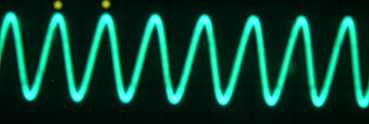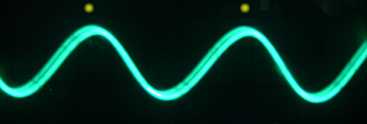The Antenna


Modern domestic receivers frequently employ two or even three entirely separate antennas -
one for VHF/FM, one for MW (Medium Wave) and one for SW (Short Wave). The reason is that
the antenna itself can be the first very course filter in the signal's path to the loudspeaker.
Radio waves travel at a fixed speed (the speed of light) so the distance between successive peaks of a wave ( its wavelength) varies depending on its frequency. The top picture shows a higher frequency wave than the bottom picture and its wavelength (the distance between the yellow dots on the pictures) is shorter on the higher frequency.
Higher frequency = shorter wavelength
Because the antenna acts as a very weak inductor (it is a piece of wire after all), the length of the antenna can be manufactured to match the wavelength we are interested in.